About
Oak Brothers Historic Restoration was formed with a single job in 2009, as a partnership between Jeff Ediger, and Art Perkins.
Staff
Jeff Ediger had established an interior house painting business fourteen years earlier, working primarily in the Hyde Park and Kenwood neighborhoods. A client of his asked him to restore three floors of stairwell and landing wood trim, doors, doorframes, and stairs in his vintage Italianate residence in Kenwood. It was too big and complex of a project to do by himself. So, Jeff hired Art to help him. With more than thirty years of experience restoring antique furniture and training through the Smithsonian Museum Conservation Institute, Art provided the restoration skills he lacked. Thus began his apprenticeship in the principles and practices of architectural preservation and restoration of wood.

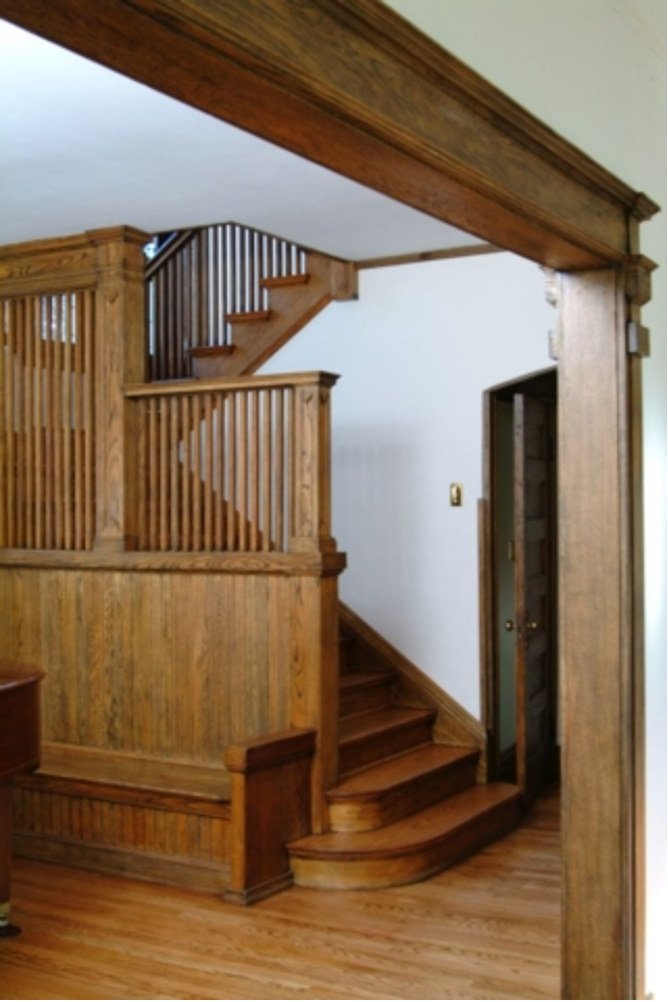
At the same time, Jeff’s years of experience working in vintage architectural contexts informed Art’s translation of his furniture restoration skills into an architectural context. It wasn’t much of a stretch, though. They quickly learned that the same attention and skills afforded to the restoration of a hundred-year-old piece of furniture is appropriate to a hundred-year-old stairwell. Hence was born the philosophy that has remained our approach, to this day, in restoring vintage and historic architectural elements. An original stairwell (or any other wood element) in a hundred-year-old house is not just a stairwell. It’s an antique. As such, it is deserving of the same care and skill that is typically reserved for antique furniture.
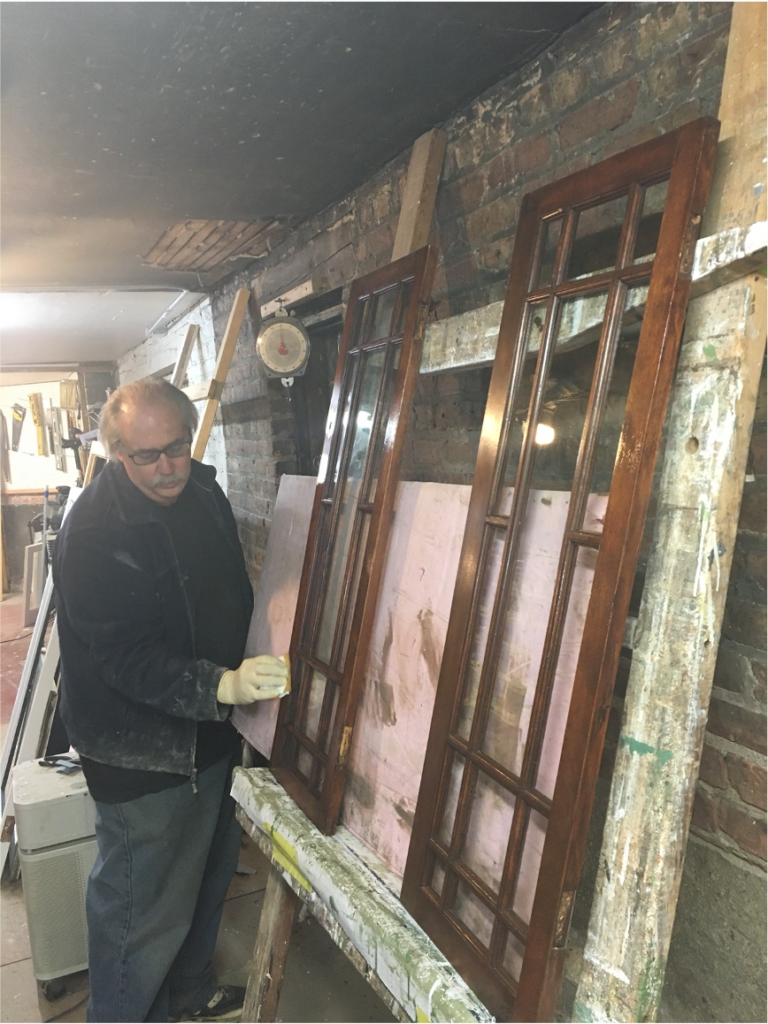
Since Jeff’s foundational apprenticeship with Art, he has gone on to develop both his hand and machine wood working skills, mostly through on-the-job training and by partnering with other, skilled craftspersons. As the business has grown, he has increasingly become responsible for running the business. Jeff has been both wise and fortunate enough to attract skilled woodworkers with more formal to enhance Oak Brothers . He now works in concert with a small team of highly skilled woodworkers. Oak Brothers may not be brothers by birth, but we are a fraternity with respect to our appreciation for preserving and restoring vintage and historical architectural wood.

Avi Elkin began taking classes in woodworking at age 10. He achieved foundational skills in both wood and metal work through the good fortune of taking high school shop classes from a gifted shop teacher with a passion for his craft that far exceeded normal expectations for high school shop instructors. A bachelor’s degree in Mechanical Engineering from the University of Colorado (Boulder) intensified Avi’s sense of the importance of and skill in precision work, along with a host of relevant skills—visualization, an intuitive sense of strength requirements of load-bearing elements, and an uncanny sense of how things fit together, to name a few. He put these skills to the test through an apprenticeship with Richard Hardie Fine Furniture in Florence, Massachusetts and has recently joined Oak Brothers Historic Restoration as a full-time woodworker.
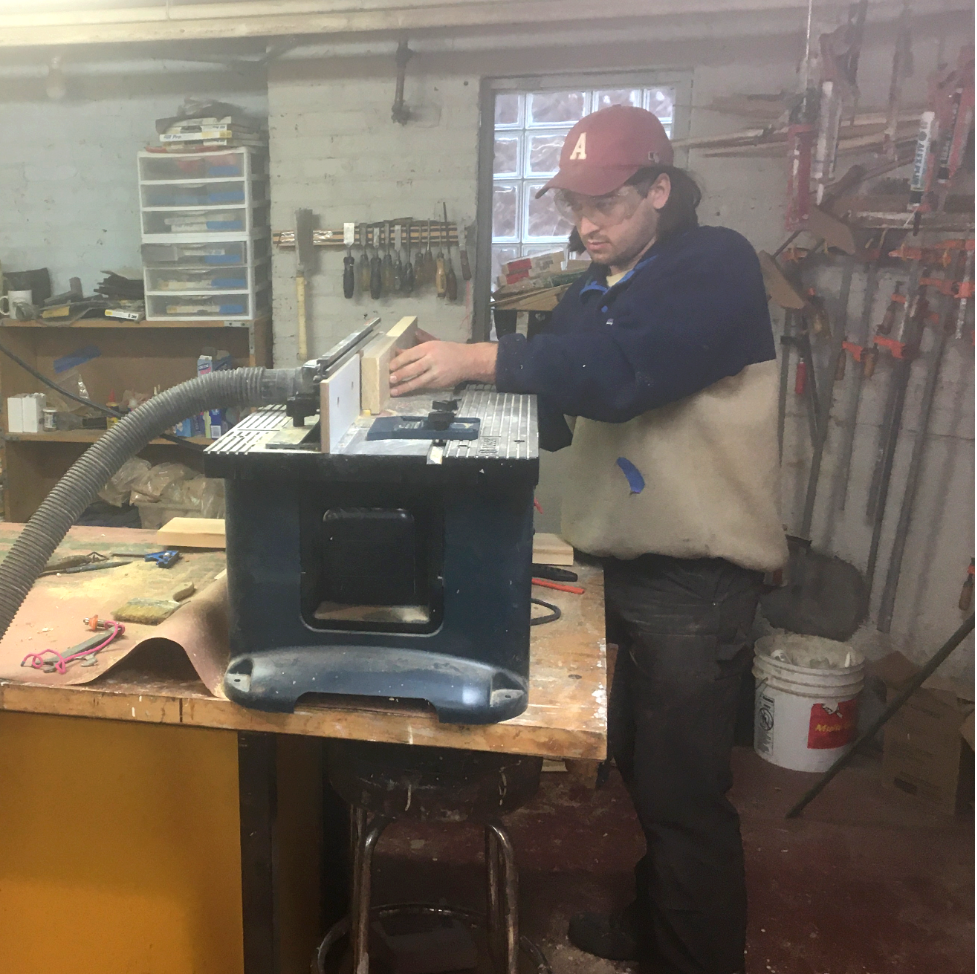
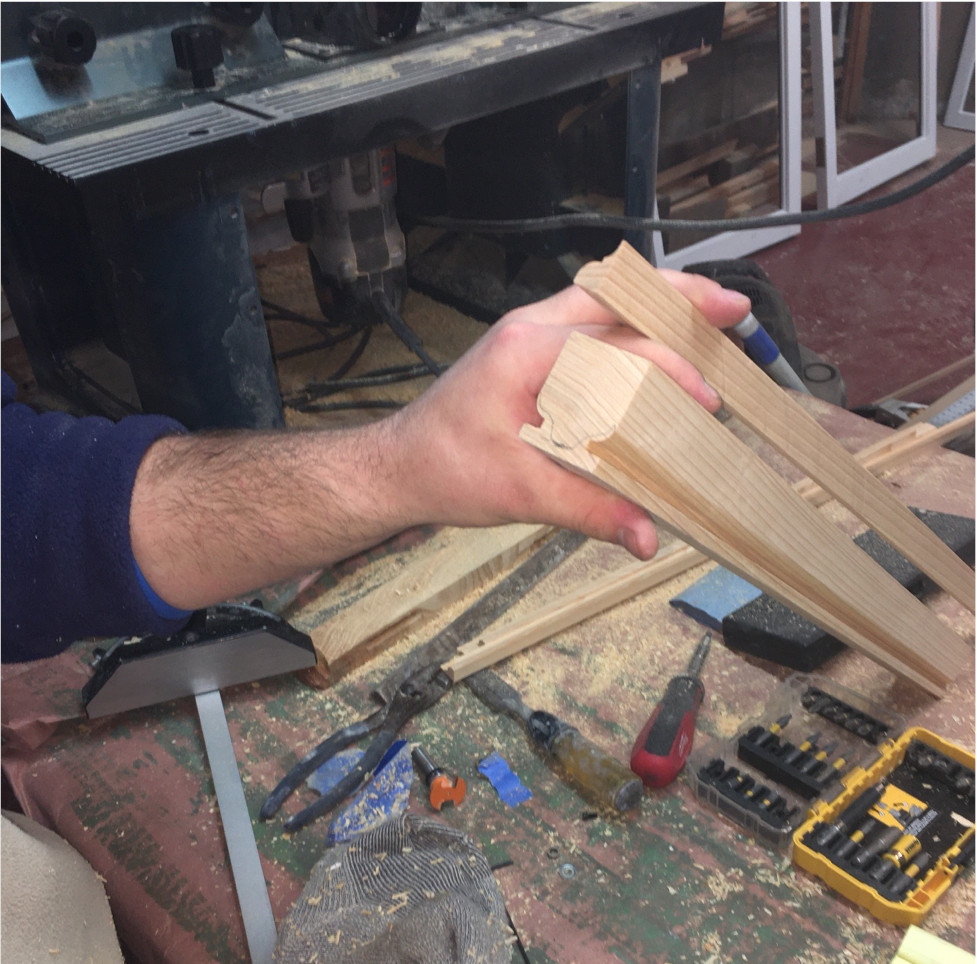
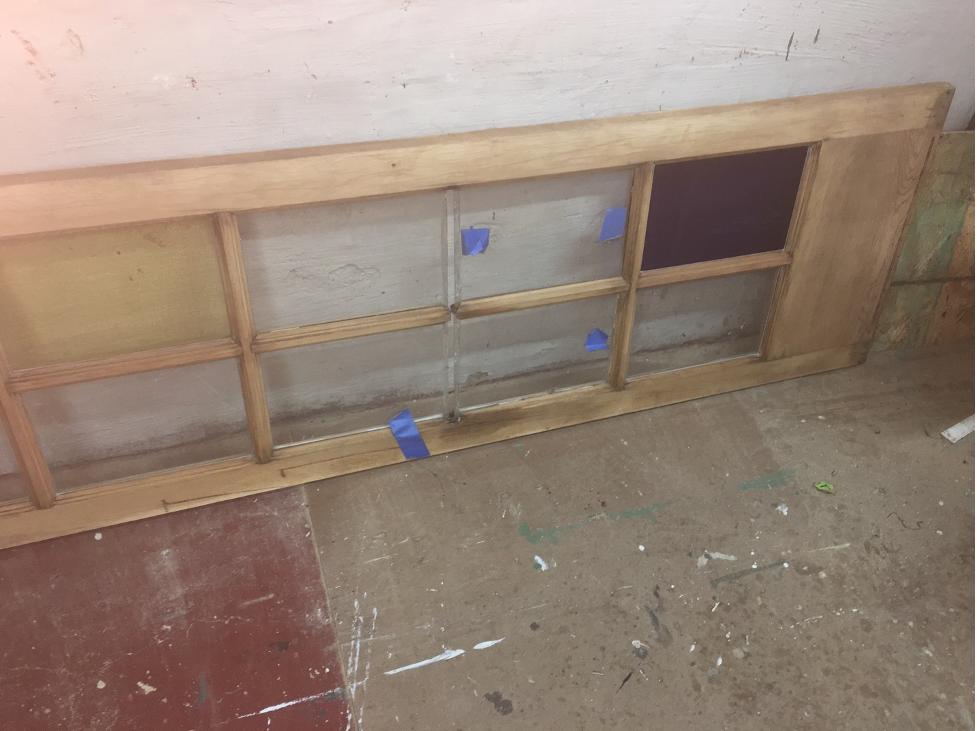
Avi is seen here, beginning the process of making reproduction moldings for a set of French doors that has suffered from water damage, resulting in wood rot.

Jon Woefler came to Oak Brothers with a background in theatre set design and building. Beginning his work in set building prior to college, he then received formal training through a bachelor’s degree in “Theatre Technical Design” from Depaul University. His fifteen years of work in such prestigious Chicago theatres as the House, Steppenwolf, and Lookingglass has given him exposure to a wide range of building projects, enabling him to develop a substantial set of building skills. The special needs of the fast-paced set design scene have enable Jon to develop an ease of adaptation and problem-solving skills that are an invaluable asset to Oak Brothers.
Jon is tooling glazing compound between molding stops and the glass on a French door. Not only does this “bedding” create a moisture and air barrier; it also enables us to achieve a tight-sealing paint line that further insulates the glass and is aesthetically pleasing. But it must be done with precision, polishing the glaze line to achieve a smooth surface to create a seamless edge between the wood and the glass.
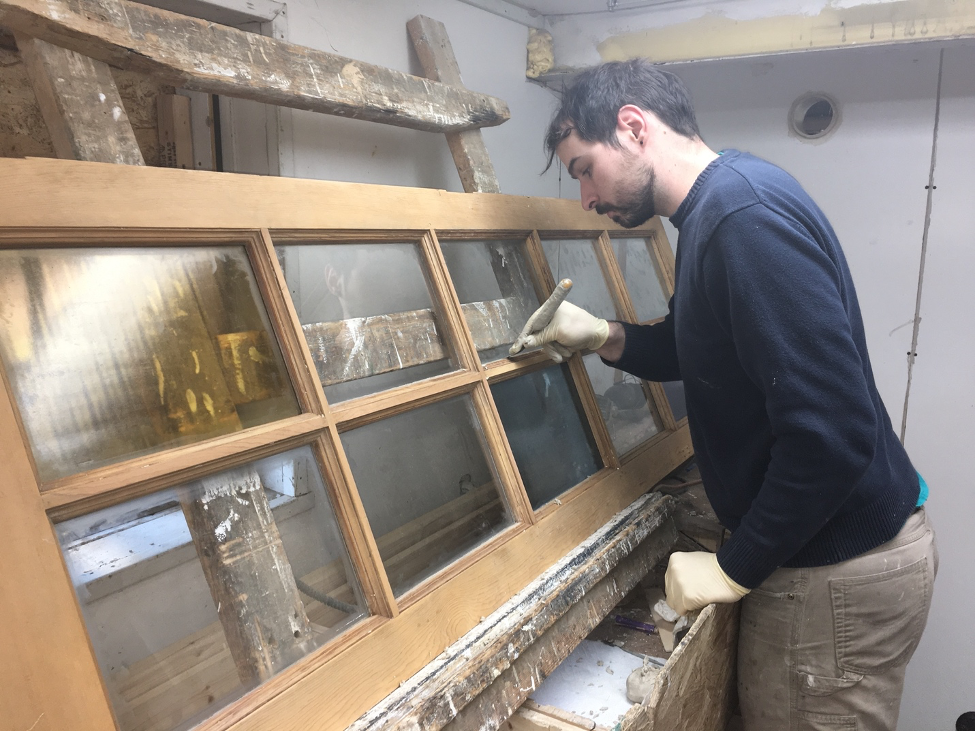

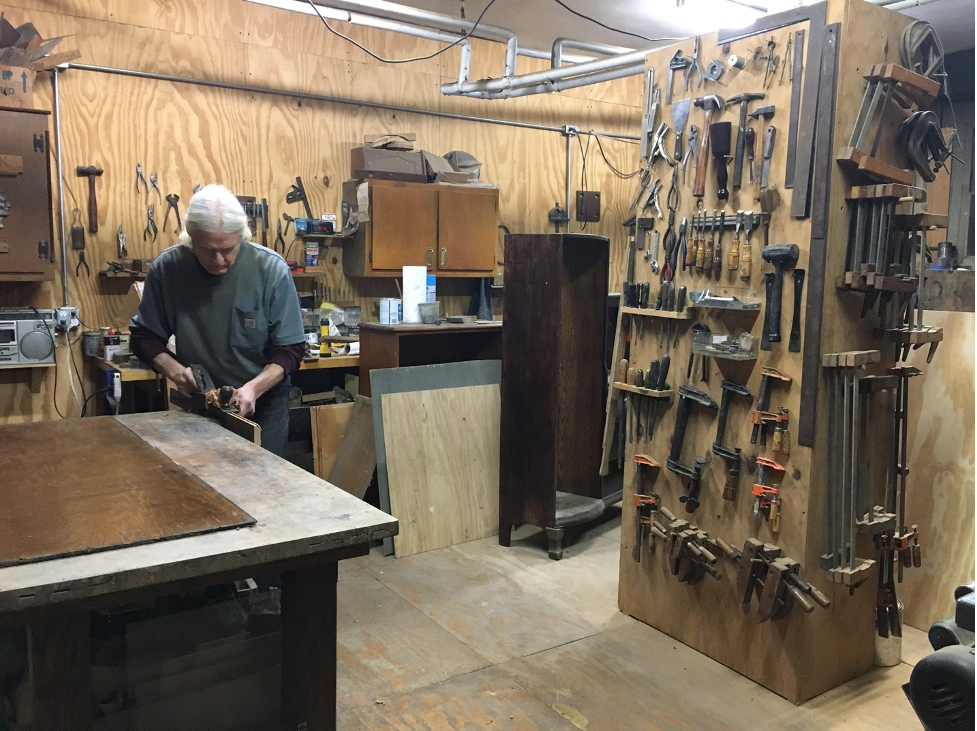
Art Perkins no longer works full-time for Oak Brothers Historic Restoration, but remains available to assist with special projects and for consultation. His shop looks like a museum of old hand tools…except for the fact that these are not museum pieces but, rather, Art’s everyday tools which he wields with finesse. Art began his career in furniture restoration more than 40 years ago, working up from humble beginnings in storefront shops to performing his craft in such prestigious shops as Armond Lee. But, as noted above, he received his foundation in restoration and preservation skills and principles through training at the Smithsonian Museum Conservation Institute. He laughs as he tells the story of how, before taking classes at the Smithsonian, he and his colleague used to “skin” the antiques they took into their shop for restoration. They would sand these artifacts down to a 600 grit smoothness, then restore them to “like new” condition. One of the many things he learned from this course of study was how wrong this approach was. Now he knows to preserve as much original material as possible, including patinas that have taken many decades to develop. To learn more about this appreciation for the effects of aging, read what we say about the Japanese principle of Wabi-Sabi.
About Our Approach to Working With Clients
Was it ever a shock when I became a homeowner and started hiring craftspersons and contractors to work on my house! I was appalled by the way many of them related to potential clients. This experience confirmed for me the importance of establishing and maintaining a good working relationship with clients.
The first and most important thing I needed to get straight in my mind was that I am only “self-employed” when I work on my own house! As the owner of my own business, I may be “self-directed” in my employment, but I work in partnership with both my clients and my staff. This, then, has implications for how we work on a day-to-day basis with our clients.
For instance:
- We show up on time when we’ve made a specific time commitment. If we are going to be fifteen or more minutes late. and it’s a condition where the owner might be waiting for us, we call or text.
- We value clarity of communication. Our written contracts and change orders are meticulously composed and precisely detailed.
- We provide periodic updates of progress on projects when necessary.
- We understand that listening is part of communication.
- We say what we will do and we do what we’ve said we will do.
- We consider educating the client (to the extent of the client’s interest) part of our job. We don’t make clients feel stupid for what they don’t know!
- We inform clients of change orders before we do the work and supply written descriptions, most often with accompanying pictures, of items that need additional work that wasn’t covered in the contract.
- We make recommendations of work outside the scope of our project that we think would benefit from attention, but we never pressure clients to add work to the project.
- We clean up the work area at the end of the day and when we are finished with the project.
Oak Brothers Historic Restoration is available for all types of work—commercial, institutional, and residential. But we have a particular appreciation for residential work. Why? Because homeowners love their houses. We like working in a context where love is one of the values at play.
If this sounds like the kind of company you would like working on your architectural restoration project, why not give us a call (at 872.666.5478) or fill out the Contact-Us form.
